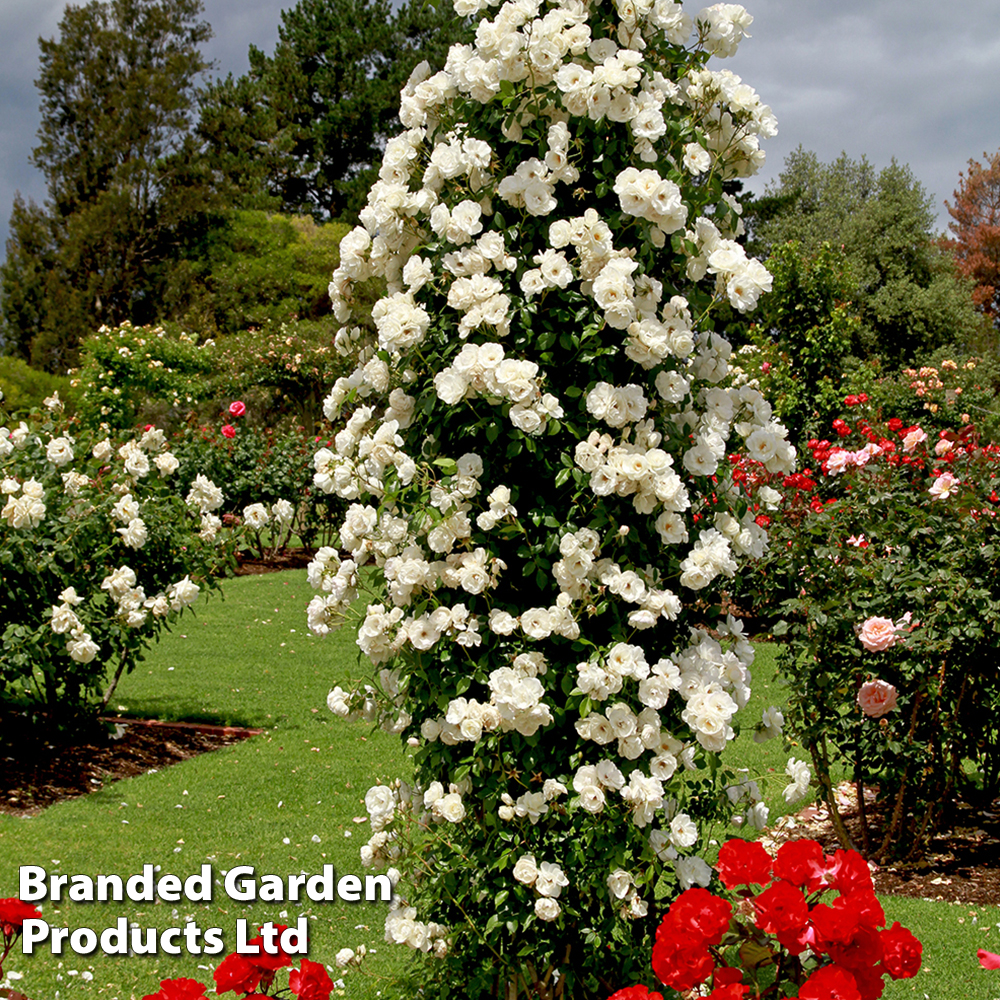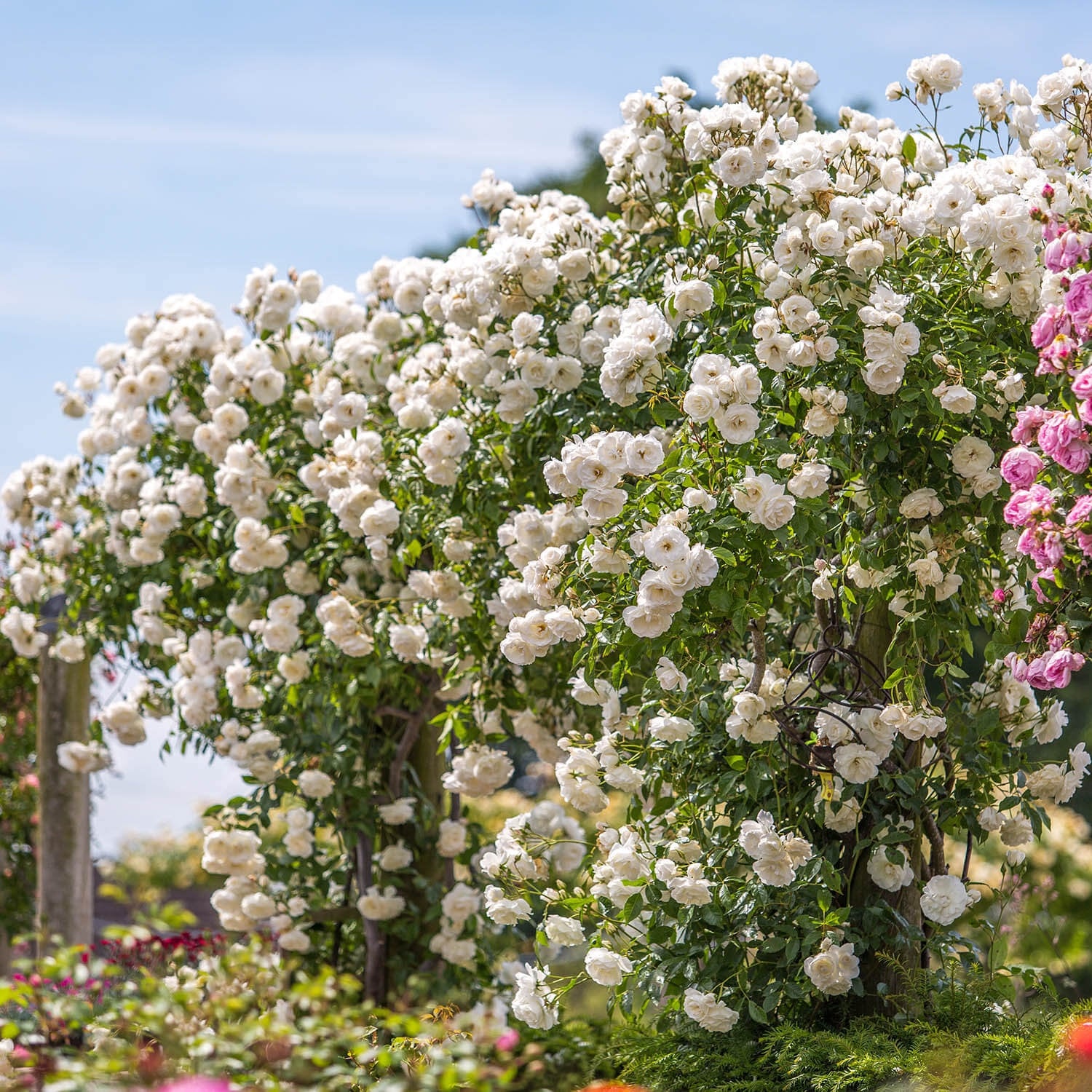Best Iceberg Climbing Rose: Care & More
A vigorous and floriferous cultivar, it presents a profusion of semi-double, pure white blooms. Thriving on vertical structures, it offers an abundant display throughout the growing season. Its adaptability to various climates and resistance to common rose diseases contribute to its popularity in both amateur and professional gardening.
This particular variety enhances gardens by providing vertical interest and fragrant beauty. Its prolific flowering habit ensures a continuous show, making it a valuable addition to arbors, fences, and walls. Originally developed as a shrub rose, its climbing form was later discovered, expanding its utility in landscape design. This characteristic has led to its widespread use in both private gardens and public spaces, contributing to aesthetic appeal and ecological diversity.
The subsequent sections will delve into specific aspects of cultivating this plant, including optimal growing conditions, pruning techniques, and strategies for managing potential challenges. The discussion will also cover its use in different garden designs and its role in supporting local ecosystems.
- Who Is Austin Hahn Indiana Man Apprehended
- Rosie Langley Height Weight Net Worth Age
- Love Island Australia Season 4 Where Are
- Fame Mark Belling Net Worth And Salary
- Brandon Charnas Bio Age Wiki Facts And
Frequently Asked Questions Regarding a Popular Climbing Rose Variety
The following addresses common inquiries concerning the cultivation and characteristics of a specific climbing rose, providing essential information for successful gardening.
Question 1: What are the optimal growing conditions for a specific climbing rose cultivar?
This rose thrives in locations receiving at least six hours of direct sunlight daily. Well-drained soil, amended with organic matter, is crucial for healthy root development and abundant flowering. Consistent watering, particularly during dry periods, is also necessary.
- Where Is Lorraine Taylor Now Is Lorraine
- Few Untold Truth About Masters Of Flip
- M I A Rapper Family Husband Children
- Meet Cheyenne Elliott Dionne Warwick S Granddaughter
- Who Is Sarah Jindra S Husband Brent
Question 2: How should the climbing rose be pruned to encourage vigorous growth and prolific blooming?
Pruning is best performed in late winter or early spring. Remove any dead, diseased, or crossing canes. Shorten lateral shoots to two to three buds to promote flower production. Train the main canes horizontally to encourage flowering along their length.
Question 3: What is the expected mature size of this specific climbing rose?
Mature height typically ranges from 8 to 15 feet, with a spread of 5 to 8 feet. Size is influenced by climate, growing conditions, and pruning practices.
Question 4: Is this climbing rose susceptible to common rose diseases?
While relatively disease-resistant, vigilance is still required. Preventative measures, such as proper air circulation and avoiding overhead watering, can minimize the risk of black spot, powdery mildew, and rust. Treatment with appropriate fungicides is advised upon detection of disease.
Question 5: What type of support structure is recommended for this climbing rose?
A sturdy trellis, arbor, or fence provides adequate support. Ensure the structure is capable of withstanding the weight of the mature rose and potential wind loads. Securely attach the canes to the support using plant ties or twine.
Question 6: How frequently should the climbing rose be fertilized?
Fertilize in early spring with a balanced rose fertilizer. A second application can be made after the first flush of blooms. Avoid over-fertilization, as it can lead to excessive vegetative growth at the expense of flowering. Soil testing can provide guidance on specific nutrient needs.
In summary, successful cultivation hinges on providing ample sunlight, well-drained soil, proper pruning, and diligent monitoring for pests and diseases. These practices will contribute to a healthy and floriferous specimen.
The next section will explore the practical applications of integrating this rose variety into various garden designs.
Cultivation Strategies for "Iceberg Climbing Rose"
The following tips provide guidance on maximizing the health, vigor, and floral display of this particular climbing rose. Adherence to these strategies will contribute to successful cultivation.
Tip 1: Select an Appropriate Planting Site: Ensure the location receives a minimum of six hours of direct sunlight daily. Inadequate sunlight will diminish flowering and increase susceptibility to disease.
Tip 2: Prioritize Soil Preparation: Amend the soil with compost or well-rotted manure before planting. This improves drainage, aeration, and nutrient availability, fostering robust root development.
Tip 3: Implement Proper Watering Techniques: Water deeply and infrequently, allowing the soil to dry slightly between waterings. Avoid overhead watering, which can promote fungal diseases.
Tip 4: Establish a Pruning Regimen: Prune in late winter or early spring, removing dead, diseased, or crossing canes. Shorten lateral shoots to two to three buds to stimulate flowering.
Tip 5: Provide Adequate Support: Utilize a sturdy trellis, arbor, or fence capable of supporting the mature weight of the rose. Securely attach the canes using plant ties or twine.
Tip 6: Monitor for Pests and Diseases: Regularly inspect the plant for signs of aphids, spider mites, black spot, or powdery mildew. Implement appropriate control measures promptly upon detection.
Tip 7: Fertilize Strategically: Apply a balanced rose fertilizer in early spring and again after the first flush of blooms. Avoid over-fertilization, as it can compromise plant health.
Tip 8: Mulch Appropriately: Apply a layer of organic mulch around the base of the plant to conserve moisture, suppress weeds, and regulate soil temperature.
Consistently applying these cultivation practices will contribute to the long-term health and aesthetic appeal of this climbing rose, ensuring a profusion of blooms and a vibrant addition to the garden.
The concluding section will summarize the key benefits and applications of this rose variety, reinforcing its value as a garden ornamental.
Concluding Assessment of the Iceberg Climbing Rose
This exploration has illuminated the characteristics, cultivation, and applications of the iceberg climbing rose. Its adaptability, disease resistance, and prolific flowering contribute to its value in landscape design. The techniques detailed for optimal growth, encompassing site selection, soil preparation, pruning, and pest management, are crucial for realizing its full potential. Furthermore, the rose's versatility allows integration into diverse garden styles, enhancing both aesthetic appeal and ecological function.
The enduring popularity of the iceberg climbing rose underscores its significance as a garden ornamental. Continued adherence to best practices in cultivation will ensure its sustained contribution to horticultural landscapes. Understanding its requirements and maximizing its inherent qualities guarantees a lasting and rewarding addition to any garden setting.
- A Glance At Ayana Fite Net Worth
- Maureen Kelly Bio Wiki Age Height Family
- Ross Naess Children Indigo Naess Leif Naess
- Carter Belfort Biography Net Worth Age College
- Bishop Briggs Husband Did Not Propose Her

Rose 'Climbing Iceberg' (Climbing)

Iceberg Climbing Rose

Iceberg Climbing Rose